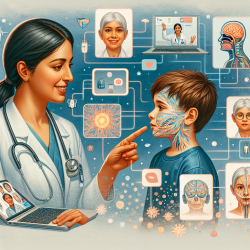The recent study "Face-to-Face Versus Video Assessment of Facial Paralysis: Implications for Telemedicine" provides valuable insights into the reliability and effectiveness of tele-assessment for facial nerve paralysis (FNP). As practitioners focused on creating optimal outcomes for children, it's essential to consider these findings to enhance telemedicine services. Let's delve into the key takeaways and practical applications of this research.
Key Findings from the Study
The study compared the reliability of three commonly used FNP grading systems—House-Brackmann, Sydney, and Sunnybrook—when administered via static video and face-to-face. The primary findings were:
- The House-Brackmann system showed excellent reliability in video assessments, comparable to face-to-face assessments.
- The Sydney system had good to excellent reliability for most facial nerve branches but showed lower reliability for the cervical branch and synkinesis in video assessments.
- The Sunnybrook system exhibited poor to fair reliability for resting symmetry and synkinesis but good to excellent reliability for voluntary movements in both assessment modes.
Implications for Telemedicine
These findings suggest that tele-assessment can be a reliable alternative to face-to-face assessments, particularly when using the House-Brackmann and Sunnybrook systems for certain parameters. However, the study also highlighted areas for improvement, especially in assessing synkinesis and the cervical branch.
Practical Applications for Practitioners
To enhance the reliability of tele-assessment for FNP, practitioners can implement the following strategies:
- Standardize Protocols: Develop standardized protocols for assessing synkinesis and the cervical branch to improve consistency.
- Utilize High-Quality Video: Ensure high-definition video quality (1080p or higher) to capture subtle facial movements accurately.
- Interactive Tele-Assessments: Conduct real-time videoconferencing to allow for interactive assessments, enabling clinicians to request specific movements and adjust camera angles.
- Training and Education: Provide specialized training for clinicians to enhance their skills in tele-assessment, focusing on the nuances of evaluating facial paralysis via video.
Encouraging Further Research
While this study provides a solid foundation, further research is needed to fine-tune tele-assessment protocols and explore the impact of real-time interactions. Future studies could compare the direct and indirect costs of telepractice with face-to-face management of FNP, providing a comprehensive understanding of the benefits and limitations of telemedicine in this field.
To read the original research paper, please follow this link: Face-to-Face Versus Video Assessment of Facial Paralysis: Implications for Telemedicine.










